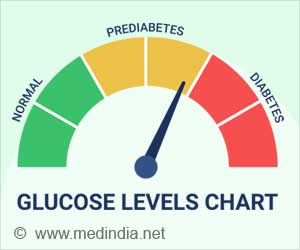Higher levels of ultra-processed food in childhood associated with increased risk of child overweight or obesity and changes in metabolome.
Highlights
- Ultra-processed foods (UPF) can increase the risk of overweight or obesity in children
- Body mass index (BMI) increases by 0.33 kg/m2 per 2 years during childhood
- Also, consumption of UPF during childhood alters metabolomic profiles
TOP INSIGHT
Body mass index (BMI) increases by an additional 0.33 kg/m2 per 2 years in childhood for each 1% increase in the proportion of ultra-processed foods (UPF) in the diet.
Diets high in ultra-processed food (UPF) have been linked with weight gain and risk of overweight, obesity, diabetes, and cardiovascular diseases.
Details of the Study
In this study, the authors aimed to investigate the associations between UPF consumption and the metabolome and their role in overweight and obesity risk, in early childhood and adolescence in a large British cohort.
The researchers used nuclear magnetic resonance spectroscopy (NMR) to analyze the metabolomic profile of plasma samples of over 4500 children from the Avon Longitudinal Study of Parents and Children (ALSPAC) cohort.
They investigated the association between 1) UPF consumption and metabolomic profiles in mid childhood (average age:7.5 years) and 2) UPF consumption at the age of 13 years and metabolomic profile in adolescence (average age:16.8 years) using statistical modelling.
Food records were transformed into portion weights as well as energy and then expressed as a percentage of the total daily food energy intake using the NOVA food classification.
1. "unprocessed or minimally processed foods" (examples: fruits, eggs),
2. "processed culinary ingredients" (such as salt, sugar, vegetable oils), and
3. "processed foods" (for example most freshly baked bread) and
4. "ultra-processed foods" that are formulations of ingredients, mostly of exclusive industrial use (such as mass produced packaged breads and cookies).
All the models were adjusted for child age, sex and BMI, maternal age, maternal education level, pre-pregnancy BMI, family income, average time spent on TV, presence of smokers at home and physical activity.
Results of the Study
In mid-childhood, 128 of the initial 232 metabolic traits showed a statistically significant association with UPF consumption, and 98 of these associations remained after further statistical analysis.
The results showed that in middle childhood, a diet with a higher proportion of UPF was negatively associated with the metabolites including docosahexaenoic acid (DHA) and omega-3 fatty acids (generally considered biomarkers of fish consumption), tyrosine and branched-chain amino acids (BCAAs) (leucine, valine and isoleucine) as well as small, medium and large high-density lipoproteins (HDL-also called 'good' cholesterol).
Additionally, in middle childhood the results showed that citrate, small, medium and large very-low-density lipoproteins (VLDL) were positively associated with UPF consumption. VLDL particles are mainly made up of triglycerides-also called 'bad' cholesterol - these are produced by the liver and are the major carrier of triglycerides in blood plasma. Alterations in VLDL levels are associated with cardiometabolic diseases and usually indicative of a lower quality diet.
In adolescence, 79 metabolic traits showed a statistically significant association with UPF consumption, and here only 19 of them were associated with UPF consumption after further statistical analysis.
At adolescence, diet with a higher proportion of UPF at the age of 13 years was negatively associated with ratio of docosahexaenoic acid to total fatty acids (%), ratio of omega-3 fatty acids to total fatty acids (%), apolipoprotein A-I, glucose, sphingomyelins, and cholesterol levels in large and very large HDL.
Additionally, higher UPF consumption at the age of 13 years was associated with increased triglycerides in total lipids in Intermediate-density lipoproteins (IDL) (lipoproteins similar to low-density lipoproteins (LDL) that transport a variety of triglyceride fats and cholesterol), LDL, and VLDL (%) in adolescence.
Preliminary data from the study show body mass index increased significantly by an additional 0.33 kg/m2 per 2 years in childhood for each 1% increase in the proportion of UPF in the diet.
Additionally, the mediation analysis (causal relationship analysis) showed that this effect on child body mass index is mediated by 20 metabolic traits, the most important being including docosahexaenoic acid (one of the most important omega-3 fatty acids mainly found in seafood), tyrosine (an amino acid that is essential to our diet and its intestinal levels are dependent on the gut microbiota and gut metabolism), and the free total cholesterol to total lipids ratio in very large VLDL particles. This is, say the authors, a preliminary analysis, and the findings will be updated in the coming months.
The authors conclude: "High-level consumption of UPF during childhood is associated with altered metabolomic profiles. It also increases the risk for children to become overweight/obese. The findings reveal the significant role of nutrient-poor diets and lifestyle behaviors in metabolic dysfunction in children and adolescents."
Source-Eurekalert
 MEDINDIA
MEDINDIA




 Email
Email










